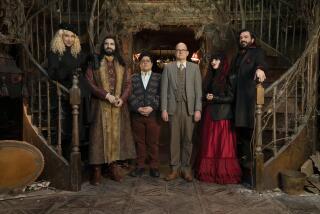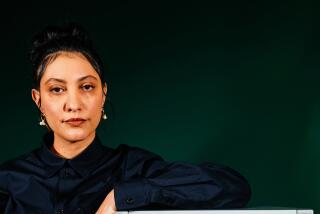Motion capture and visual effects bring back Tarkin for ‘Rogue One’
One of the best-kept secrets of 2016 was the fact that a major character in Gareth Edwards’ “Rogue One: A Star Wars Story” would be appearing on screen for the first time since the actor who portrayed him passed away over 20 years ago. Through visual effects wizardry and a live-action performance by actor Guy Henry, the commander of the first Death Star in 1977’s “Star Wars,” Grand Moff Tarkin, was brought back to the big screen as though the late Peter Cushing was still portraying him. For John Knoll, it was the most difficult aspect of his responsibilities as visual effects supervisor on the global blockbuster.
An Oscar winner for his work on “Pirates of the Caribbean – Dead Man’s Chest,” Knoll believes the illusion wouldn’t have succeeded without Henry’s presence. The effects team’s job was effectively that of someone who would be creating cosmetic or prosthetic makeup. He notes, “In the same way that makeup doesn’t mean you get rid of actors, the actor has to come from somewhere.”
There were four characteristics needed in order to find the perfect Tarkin substitute.
“One, you’re looking for somebody who is a good actor, who can deliver a compelling performance against someone who has the caliber of [costar] Ben Mendelsohn,” Knoll says. “Two, you’re looking for someone who ideally, like when you’re playing a historic figure, can take on the mannerisms from the character that they’re meant to be portraying to mimic them to some extent.”
Third is perhaps a little simpler: Their physical build must be close to the original character. If the actor’s attributes are close enough it means the only effect necessary is with the head and face. The fourth and final characteristic is finding an actor who can provide a voice so close to Cushing’s that you don’t need to cast a second actor to fill in the vocals. Knoll clarifies, “If the voice performance doesn’t exactly match the face performance, if there’s a little bit of a reinterpretation there, that can look a little weird and problematic.”
Henry told everyone upfront he was a not a mimic and would be doing his own version of what he thought Tarkin should be and that was a compromise the filmmakers made. The biggest challenge actually was that Henry ended up moving his face differently than Cushing did. Even though the artists tracked all the motion from Henry’s face, when he formed a smile it would often push the character animation off model.
“Peter Cushing had this thing that he would do where he barely moved his upper lip if at all,” Knoll explains. “He would open his jaw about halfway and he would make this sort of trapezoidal shape of his lower lip that exposed his whole lower row of teeth. It was very distinctive when he would make those ‘aah’ sounds. Guy Henry didn’t do that. His ‘aah’ sound was a little more what you see people conventionally doing.”
That meant a lot of additional work from Knoll’s team but they were assisted by a new advance to motion-capture performance recording used on “Rogue One”: infrared lighting and infrared cameras. These devices were able to capture areas of Henry’s face that were not blown out or affected by cinematographer Greig Fraser’s on-set lighting.
Of course, bringing Cushing back would pale in comparison to the film’s final image, a teenage Princess Leia, Carrie Fisher, facing the viewer and uttering the word “hope.” That was a pressure-filled undertaking because unlike Cushing, generations of moviegoers have a distinct memory of Fisher in the first “Star Wars” film and it was the emotional stamp for the movie’s dramatic third act.
“We were trying to get an expression, a feeling that she’s conscious of the event that just transpired, all the people that lost their lives, and sacrificed themselves to get her the data cartridge that’s in her hand,” Knoll says. “The tricky thing about that is there wasn’t really anything where we could crib that from -- a particular thing that Carrie Fisher did in the original films. There wasn’t really something, ‘Yeah, that’s the smile we’re trying to copy here.’”
Fisher did not participate in the re-creation herself (Ingvild Deila stood in), but Lucasfilm president and “Rogue One” producer Kathleen Kennedy insisted they would not move forward unless she signed off on it. That caused a bit of tension as Knoll and his team needed to use as much time as possible to take the shot as far as they could. They needn’t have worried.
Knoll notes, “We showed her a version about a month before we finished and she loved it. Kathy called me right after she showed it to her and she said, ‘She freaked out. She loved it.’ She said, ‘How did you do that? Was that old footage?’ She thought it was really cool.”
See the most read stories this hour »
More to Read
From the Oscars to the Emmys.
Get the Envelope newsletter for exclusive awards season coverage, behind-the-scenes stories from the Envelope podcast and columnist Glenn Whipp’s must-read analysis.
You may occasionally receive promotional content from the Los Angeles Times.






